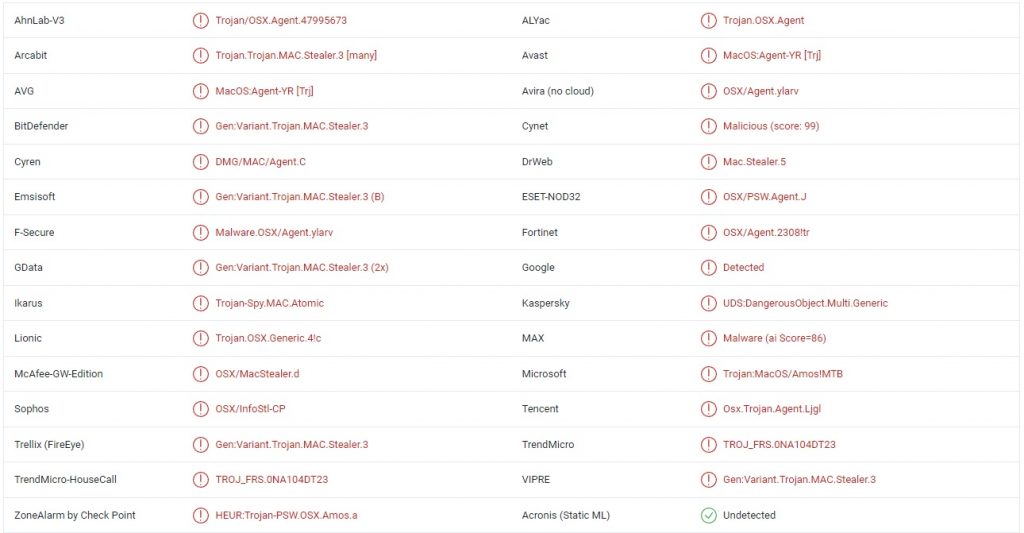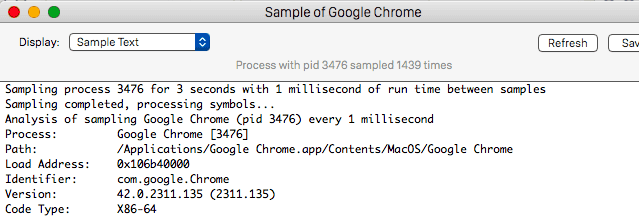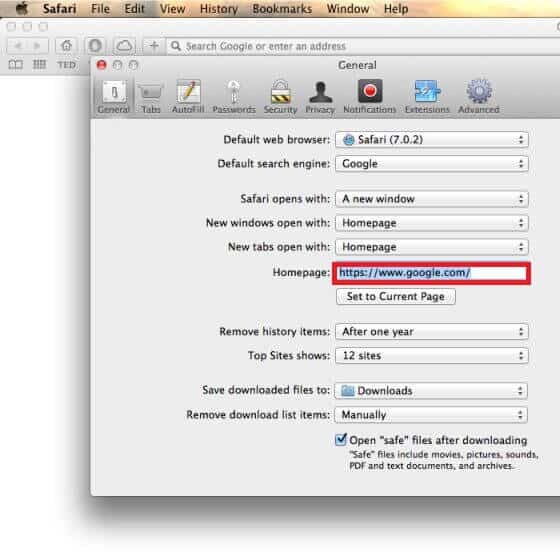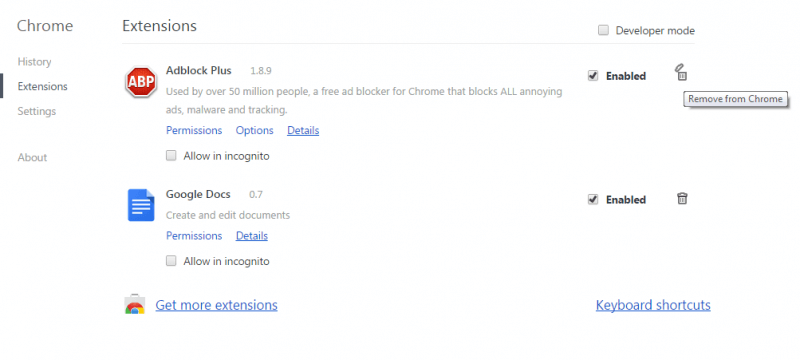Atomic Stealer
A Trojan Horse infection in a computer should never be underestimated, which is why, in the present article, we will share with you some important information about this type of malicious programs, placing an emphasis on Atomic Stealer – one of the latest Trojan Horse viruses. A guide below this short article will help those of you who already have Atomic Stealer in their Mac.

It is, however, advisable to first read the article itself in order to better understand exactly what you are facing, what the potential consequences of this malware attack may be, and how to prevent such infections from happening again.
Amos Malware
Atomic macOS Stealer (AMOS) is a Trojan malware that targets macOS and is known for its ability to remain hidden on infected computers for extended periods of time. It is highly stealthy, which makes it difficult to detect and remove. AMOS is designed to steal sensitive information, including user names, passwords, credit card numbers, and cookies from multiple browsers.
One of the challenges with AMOS is its ability to disguise its processes and files, which it does by using the same names as system processes and files to remain undetected. Trojans like RustBucket and Atomic Stealer are particularly problematic, If you suspect that your Mac is infected with them, it is important to use a trusted guide or a recommended anti-malware tool to remove them. It is important to follow the instructions carefully to avoid deleting the wrong files and making the problem worse.
The potential consequences
Since most infections of this type are very versatile, we can’t tell you exactly what to expect from Atomic Stealer. However, we can give you an overall idea of the potential uses of Trojans. Most such viruses can be used to spy on you, to gather sensitive data such as passwords and banking numbers from your computer, to insert Ransomware infections in the system, to use your RAM, GPU, and CPU for cryptocurrency- mining, and more. To prevent any of this from happening, be sure to remove Atomic Stealer ASAP, and also remember to never download pirated content, visit sketchy sites, open spam emails, or click on questionable online ads and prompts. Also, a strong and frequently-updated antivirus is can significantly increase the safety levels of your system, which is why we advise you to get one if you currently do not have such a program.
SUMMARY:
| Name | Atomic Stealer |
| Type | Trojan |
| Detection Tool |
Remove Atomic Stealer from Mac
If you have an Android virus, please use our Android Malware Removal guide.
If you have an iPhone virus, please use our iPhone Virus Removal guide
For a quick way to remove Atomic Stealer try to do this inside your Mac browser:
- Open your Mac browser.
- Go to Preferences.
- Now navigate to the extensions sub-menu.
- Look for any unfamiliar entries, including Atomic Stealer.
- Remove Atomic Stealer from your Mac as well as any other suspicious-looking items by clicking on the trash bin icon.
If this does not help then continue reading this article for more detailed instructions on how to get rid of Atomic Stealer!

The first thing you need to do is to Quit Safari (if it is opened). If you have trouble closing it normally, you may need to Force Quit Safari:
You can choose the Apple menu and click on Force Quit.
Alternatively, you can simultaneously press ⌘ (the Command key situated next to the space bar), Option (the key right next to it) and Escape (the key located at the upper left corner of your keyboard).
If you have done it right a dialog box titled Force Quit Applications will open up.
In this new dialog window select Safari, then press the Force Quit button, then confirm with Force Quit again.
Close the dialog box/window.

WARNING! READ CAREFULLY BEFORE PROCEEDING!
Start Activity Monitor by opening up Finder, then proceed to ![]()
Once there, look at all the processes: if you believe any of them are hijacking your results, or are part of the problem, highlight the process with your mouse, then click the “i” button at the top. This will open up the following box:

Now click on Sample at the bottom:

Do this for all processes you believe are part of the threat, and run any suspicious files in our online virus scanner, then delete the malicious files:


The next step is to safely launch Safari again. Press and hold the Shift key while relaunching Safari. This will prevent Safari’s previously opened pages from loading again. Once Safari is opened up, you can release the Shift key.
On the off chance that you are still having trouble with scripts interrupting the closing of unwanted pages in Safari, you may need to take some additional measures.
First, Force Quit Safari again.
Now if you are using a Wi-Fi connection turn it off by selecting Wi-Fi off in you Mac’s Menu. If you are using a cable internet (Ethernet connection), disconnect the Ethernet cable.

Re-Launch Safari but don’t forget to press and hold the Shift button while doing it, so no previous pages can be opened up. Now, Click on Preferences in the Safari menu,

and then again on the Extensions tab,

Select and Uninstall any extensions that you don’t recognize by clicking on the Uninstall button. If you are not sure and don’t want to take any risks you can safely uninstall all extensions, none are required for normal system operation.
![]()
The threat has likely infected all of your browsers. The instructions below need to be applied for all browsers you are using.
Again select Preferences in the Safari Menu, but this time click on the Privacy tab,

Now click on Remove All Website Data, confirm with Remove Now. Keep in mind that after you do this all stored website data will be deleted. You will need to sign-in again for all websites that require any form of authentication.
Still in the Preferences menu, hit the General tab

Check if your Homepage is the one you have selected, if not change it to whatever you prefer.

Select the History menu this time, and click on Clear History. This way you will prevent accidentally opening a problematic web page again.
![]() How to Remove Atomic Stealer From Firefox in OSX:
How to Remove Atomic Stealer From Firefox in OSX:
Open Firefox, click on ![]() (top right) ——-> Add-ons. Hit Extensions next.
(top right) ——-> Add-ons. Hit Extensions next.

The problem should be lurking somewhere around here – Remove it. Then Refresh Your Firefox Settings.
![]() How to Remove Atomic Stealer From Chrome in OSX:
How to Remove Atomic Stealer From Chrome in OSX:
Start Chrome, click ![]() —–>More Tools —–> Extensions. There, find the malware and select
—–>More Tools —–> Extensions. There, find the malware and select ![]() .
.

Click ![]() again, and proceed to Settings —> Search, the fourth tab, select Manage Search Engines. Delete everything but the search engines you normally use. After that Reset Your Chrome Settings.
again, and proceed to Settings —> Search, the fourth tab, select Manage Search Engines. Delete everything but the search engines you normally use. After that Reset Your Chrome Settings.
If the guide doesn’t help, download the anti-virus program we recommended or try our free online virus scanner. Also, you can always ask us in the comments for help!

Leave a Reply